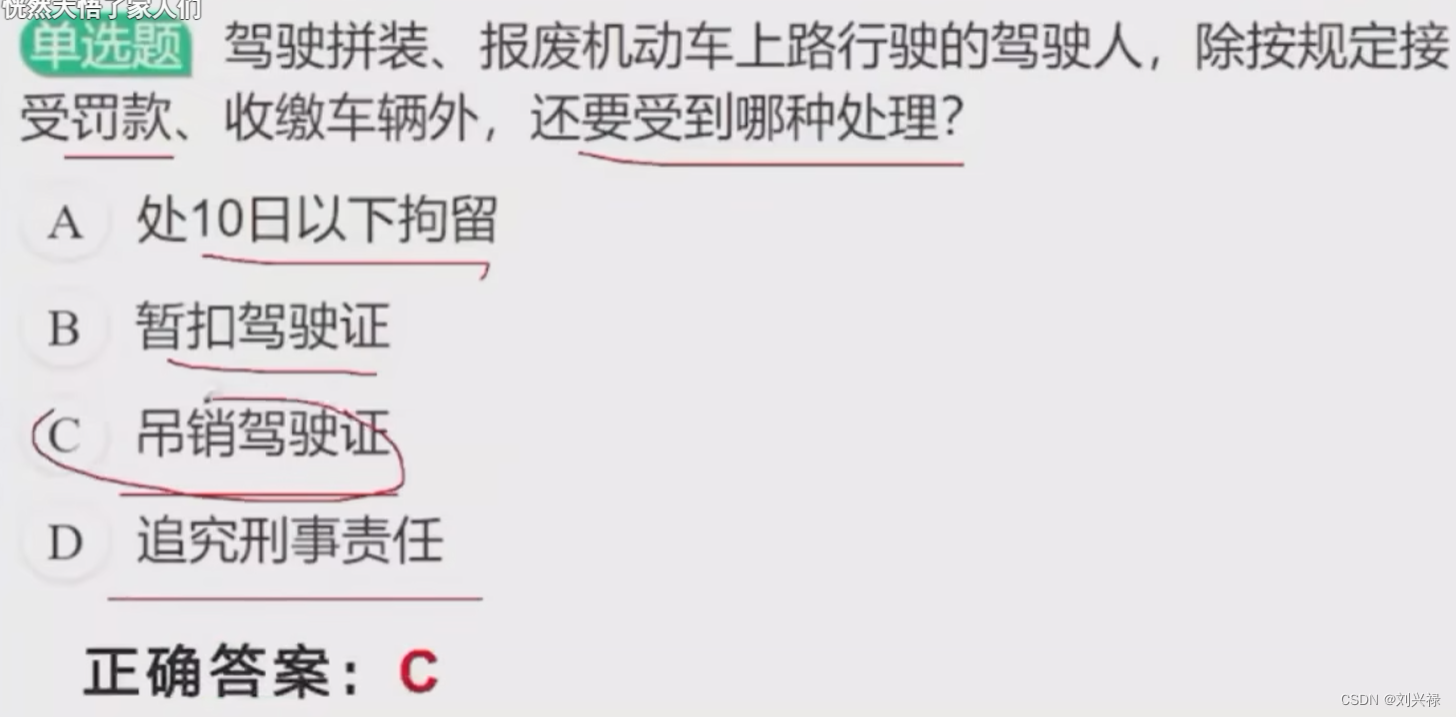当前位置:网站首页>Pytorch框架学校记录11——搭建小实战完整细节
Pytorch框架学校记录11——搭建小实战完整细节
2022-08-01 20:36:00 【柚子Roo】
Pytorch框架学校记录11——搭建小实战完整细节
1. 搭建小实战和Sequential的使用
我们搭建了一个CIFAR10模型,下面的代码是未使用Sequential的情况。
import torch
from torch import nn
class Test(nn.Module):
def __init__(self):
super(Test, self).__init__()
self.conv1 = nn.Conv2d(in_channels=3, out_channels=32, kernel_size=5, padding=2)
self.maxpool1 = nn.MaxPool2d(kernel_size=2)
self.conv2 = nn.Conv2d(in_channels=32, out_channels=32, kernel_size=5, padding=2)
self.maxpool2 = nn.MaxPool2d(kernel_size=2)
self.conv3 = nn.Conv2d(in_channels=32, out_channels=64, kernel_size=5, padding=2)
self.maxpool3 = nn.MaxPool2d(kernel_size=2)
self.flatten = nn.Flatten()
self.hidden = nn.Linear(in_features=1024, out_features=64)
self.fc = nn.Linear(in_features=64, out_features=10)
def forward(self, input):
input = self.conv1(input)
input = self.maxpool1(input)
input = self.conv2(input)
input = self.maxpool2(input)
input = self.conv3(input)
input = self.maxpool3(input)
input = self.flatten(input)
input = self.hidden(input)
output = self.fc(input)
return output
x = torch.tensor([0.1, 0.2, 0.3])
print(x.shape)
y = torch.tensor([1])
x = torch.reshape(x, (1, 3))
print(x)
2. 损失函数和反向传播
torch.nn.CrossEntropyLoss(weight=None, size_average=None, ignore_index=- 100, reduce=None, reduction=‘mean’, label_smoothing=0.0)
参数:
- Input: Shape (C), (N, C)(N,C) or (N, C, d_1, d_2, …, d_K)(N,C,d1,d2,…,d**K) with K \geq 1K≥1 in the case of K-dimensional loss.
- Target: If containing class indices, shape ()(), (N)(N) or (N, d_1, d_2, …, d_K)(N,d1,d2,…,d**K) with K \geq 1K≥1 in the case of K-dimensional loss where each value should be between [0, C)[0,C). If containing class probabilities, same shape as the input and each value should be between [0, 1][0,1].
在这里我们以交叉熵损失函数为例,backward()方法为反向传播算法。
from torch import nn
import torchvision
from torch.utils.data import DataLoader
dataset = torchvision.datasets.CIFAR10(root='dataset', train=False, transform=torchvision.transforms.ToTensor(), download=True)
dataloader = DataLoader(dataset, 64)
class Test(nn.Module):
def __init__(self):
super(Test, self).__init__()
self.conv1 = nn.Conv2d(in_channels=3, out_channels=32, kernel_size=5, padding=2)
self.maxpool1 = nn.MaxPool2d(kernel_size=2)
self.conv2 = nn.Conv2d(in_channels=32, out_channels=32, kernel_size=5, padding=2)
self.maxpool2 = nn.MaxPool2d(kernel_size=2)
self.conv3 = nn.Conv2d(in_channels=32, out_channels=64, kernel_size=5, padding=2)
self.maxpool3 = nn.MaxPool2d(kernel_size=2)
self.flatten = nn.Flatten()
self.hidden = nn.Linear(in_features=1024, out_features=64)
self.fc = nn.Linear(in_features=64, out_features=10)
def forward(self, input):
input = self.conv1(input)
input = self.maxpool1(input)
input = self.conv2(input)
input = self.maxpool2(input)
input = self.conv3(input)
input = self.maxpool3(input)
input = self.flatten(input)
input = self.hidden(input)
output = self.fc(input)
return output
test = Test()
loss = nn.CrossEntropyLoss()
step = 0
for data in dataloader:
imgs, target = data
output = test(imgs)
res = loss(output, target)
res.backward()
print(res)
3. 优化器
优化器的作用:将模型的中的参数根据要求进行实时调整更新,使得模型变得更加优良。
在这里我们使用的是随机梯度下降法(SGD)作为优化器的优化依据。
from torch import nn
import torchvision
import torch
from torch.utils.data import DataLoader
dataset = torchvision.datasets.CIFAR10(root='dataset', train=False, transform=torchvision.transforms.ToTensor(), download=True)
dataloader = DataLoader(dataset, 64)
class Test(nn.Module):
def __init__(self):
super(Test, self).__init__()
self.conv1 = nn.Conv2d(in_channels=3, out_channels=32, kernel_size=5, padding=2)
self.maxpool1 = nn.MaxPool2d(kernel_size=2)
self.conv2 = nn.Conv2d(in_channels=32, out_channels=32, kernel_size=5, padding=2)
self.maxpool2 = nn.MaxPool2d(kernel_size=2)
self.conv3 = nn.Conv2d(in_channels=32, out_channels=64, kernel_size=5, padding=2)
self.maxpool3 = nn.MaxPool2d(kernel_size=2)
self.flatten = nn.Flatten()
self.hidden = nn.Linear(in_features=1024, out_features=64)
self.fc = nn.Linear(in_features=64, out_features=10)
def forward(self, input):
input = self.conv1(input)
input = self.maxpool1(input)
input = self.conv2(input)
input = self.maxpool2(input)
input = self.conv3(input)
input = self.maxpool3(input)
input = self.flatten(input)
input = self.hidden(input)
output = self.fc(input)
return output
test = Test()
loss = nn.CrossEntropyLoss()
step = 0
optimer = torch.optim.SGD(params=test.parameters(), lr=0.01)
for epoch in range(20):
loss_sum = 0.0
for data in dataloader:
imgs, target = data
output = test(imgs)
res = loss(output, target)
optimer.zero_grad()
res.backward()
optimer.step()
loss_sum += res
print(loss_sum)
4. 现有网络模型的使用及修改
我们使用Pytorch框架中的VGG16模型,并将该模型的全连接层的输出特征的个数设置为10,
torchvision.models.vgg16(***, weights: Optional[torchvision.models.vgg.VGG16_Weights] = None, progress: bool = True, **kwargs: Any)
参数:
pretrained:设置为True代表加载预训练模型
对现有网络模型的修改可分为两种方式,一种为添加,另一种为修改。
详细的操作方法如下:
import torch
from torch import nn
import torchvision
vgg_true = torchvision.models.vgg16(pretrained=True)
vgg_false = torchvision.models.vgg16(pretrained=False)
vgg_true.add_module("add_model", nn.Linear(in_features=1000, out_features=10))
print(vgg_true)
vgg_false.classifier[6] = nn.Linear(in_features=4096, out_features=10)
print(vgg_false)
5. 模型的保存与读取
模型的保存有两种方式:
import torchvision
import torch
vgg16 = torchvision.models.vgg16(pretrained=False)
# 保存方式1 模型结构+模型参数
torch.save(vgg16, "vgg16_methods1.pth")
# 保存方式2 模型参数(官方推荐)
torch.save(vgg16.state_dict(), "vgg16_methods2.pth")
模型的加载方式也有两种方式
import torch
import torchvision
# 方式1 加载模型
vgg16_model1 = torch.load("vgg16_methods1.pth")
print(vgg16_model1)
# 方式2 加载模型
vgg16 = torchvision.models.vgg16(pretrained=False)
vgg16.state_dict(torch.load("vgg16_methods2.pth"))
print(vgg16)
边栏推荐
- Go 语言中常见的坑
- [Multi-task model] Progressive Layered Extraction: A Novel Multi-Task Learning Model for Personalized (RecSys'20)
- Protocol Buffer 使用
- Godaddy domain name resolution is slow and how to use DNSPod resolution to solve it
- tiup mirror clone
- 线程池处理异常的方法
- 【社媒营销】如何知道自己的WhatsApp是否被屏蔽了?
- 实用新型专利和发明专利的区别?秒懂!
- 【节能学院】数据机房中智能小母线与列头柜方案的对比分析
- The configuration manual for the secondary development of the XE training system of the missing moment document system
猜你喜欢

【个人作品】记之-串口日志记录工具

微信小程序云开发|个人博客小程序
Godaddy domain name resolution is slow and how to use DNSPod resolution to solve it

我的驾照考试笔记(3)

STAHL触摸屏维修一体机显示屏ET-316-TX-TFT常见故障
![[Energy Conservation Institute] Ankerui Food and Beverage Fume Monitoring Cloud Platform Helps Fight Air Pollution](/img/ca/e67c8e2196adb5a078acc44ba5ad6f.jpg)
[Energy Conservation Institute] Ankerui Food and Beverage Fume Monitoring Cloud Platform Helps Fight Air Pollution

New graduate students, great experience in reading English literature, worthy of your collection

用户身份标识与账号体系实践

解除360对默认浏览器的检测与修改

Where should I prepare for the PMP exam in September?
随机推荐
98. Embedded controller EC actual combat EC development board development completed
latex paper artifact -- server deployment overleaf
Go 语言中常见的坑
【多任务模型】Progressive Layered Extraction: A Novel Multi-Task Learning Model for Personalized(RecSys‘20)
[Personal Work] Remember - Serial Logging Tool
Godaddy域名解析速度慢问题以及如何使用DNSPod解析解决
【ES】ES2021 我学不动了,这次只学 3 个。
Different operating with different locks, rounding
tiup mirror clone
大整数相加,相减,相乘,大整数与普通整数的相乘,相除
Debug一个ECC的ODP数据源
数字孪生北京故宫,元宇宙推进旅游业进程
Zheng Xiangling, Chairman of Tide Pharmaceuticals, won the "2022 Outstanding Influential Entrepreneur Award" Tide Pharmaceuticals won the "Corporate Social Responsibility Model Award"
外骨骼机器人(七):标准步态数据库
STAHL触摸屏维修一体机显示屏ET-316-TX-TFT常见故障
密码学的基础:X.690和对应的BER CER DER编码
tiup mirror grant
Wildcard SSL/TLS certificate
数据库单字段存储多个标签(位移操作)
9月备考PMP,应该从哪里备考?
